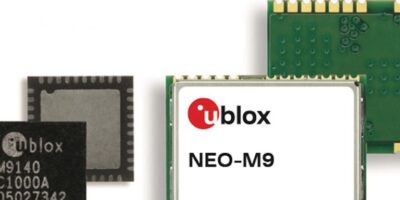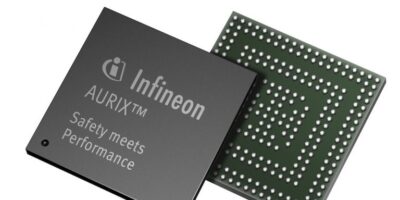For automotive and high-end telematics, u-blox has introduced the NEO-M9N module, based on its M9 global positioning technology. The meter-level M9 global positioning technology platform is designed for demanding automotive, telematics, and unmanned aerial vehicle (UAV) applications.
The GNSS chip, UBX-M9140 and the NEO-M9N can receive signals from up to four GNSS constellations (GPS, Glonass, Beidou, and Galileo) concurrently, for high positional accuracy even in difficult conditions, such as deep urban canyons, says u-blox. M9 offers a position update rate of up to 25Hz, enabling dynamic applications, like UAVs, to receive position information with low latency.
The M9 technology has a special filtering against RF interference and jamming, spoofing detection and advanced detection algorithms that enable it to report fraudulent attacks quickly. A surface acoustic wave (SAW) filter, with a low noise amplifier (LNA) in the RF path, is integrated in the NEO-M9N module. According to u-blox, this guarantees normal operations even under strong RF interferences, for example when a cellular modem is co-located with the NEO-M9N.
u-blox advises that users can design a single PCB and migrate to a different positioning technology, such as dead reckoning augmenting GNSS technology, with very little change to the board design.
In support of the M9, the company offers the Explorer Kit M9 (XPLR-M9) development board. The miniature device is supplied with u-start software, which includes a number of pre-set scenarios to enable users to explore the performance of the new device.
The M9 technology complies with the ISO/TS 16949, ISO 16750, AEC-Q100 standards. The NEO-M9N is the first module based on the M9 platform. It is sampling now. The UBX-M9140 high performance chip and the Explorer Kit are available now.
u‑blox provides positioning and wireless communication technologies for the automotive, industrial, and consumer markets for people, vehicles, and machines to determine their precise position and communicate wirelessly over cellular and short range networks. The company’s portfolio of chips, modules, and a growing ecosystem of product supporting data services are designed to help customers develop solutions for the IoT.
http://www.ublox.com







